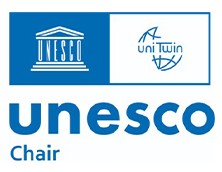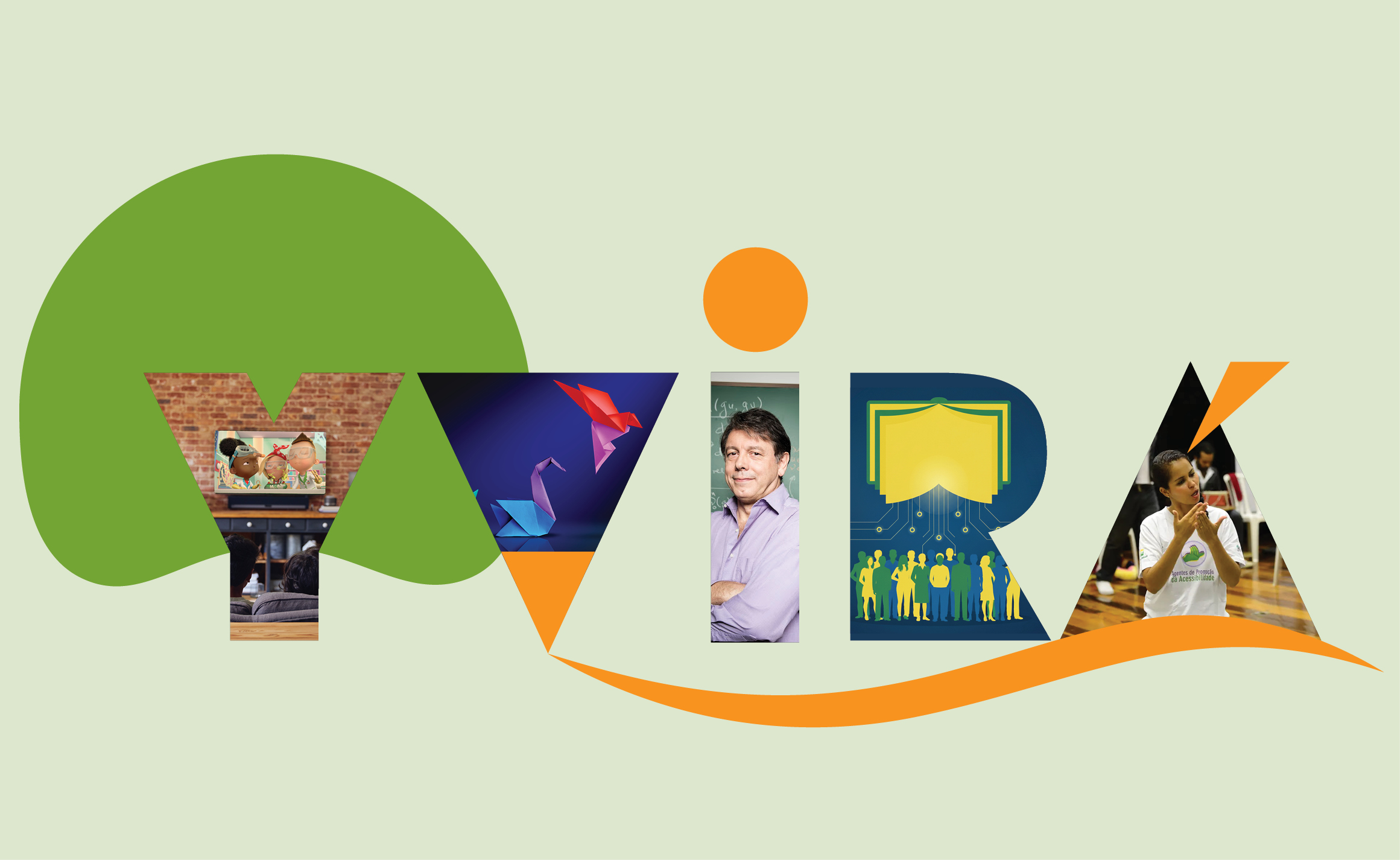Elisa Martins
Special for Yvirá
“Naps, in particular, do not make children learn more. They allow children to forget less. They work on consolidating memories.”
“The educational system is set up less so that people learn in a lasting way and more so to produce a knowledge ranking that is instantaneous, only valid on the day of the test.”
“Lack of sleep is an extremely widespread problem. In many professional activities, even sleeping little is a kind of badge of honor. It seems that people need to brag about being at their limit.”
“School needs to have sleeping rooms, hammocks, dark, safe rooms so that people can sleep. It’s not much different from having a bathroom: if there is a physiological need, it needs to be given an outlet.”
“There is a cultural flattening with this monopoly of sensory stimulation. And when there are four, six, eight hours of screen time, it enters the realm of pathology. Hence this epidemic of mental disorders among children and adolescents.”
“The loss of the ability to fully concentrate on one thing is worrying. When someone loses this, every time they start to do a task they have to stop halfway through and go to social media or play a video game. It’s pathological.”
“Our horizon of victory is a school that is a space for intellectual, emotional, and artistic discovery and adventure. This transformation refers to an ancestral future, and schools need help to achieve this.”
Elisa Martins
Especial para a Yvirá
Neuroscientist Sidarta Ribeiro explains how naps in the school environment can help learning last longer and discusses the challenges of applying research on the subject on a large scale, in a society with children and young people increasingly connected to screens
PHOTO: LUIZA MUGNOL UGARTE_PUBLICITY
Childhood, as we have known it for thousands of years, is in danger, and the list of reasons for this is extensive. Increasingly present in the lives of children and adolescents, the internet, social networks and excessive use of screens change behaviors and impact the mental health of current generations. But there are also basic and simpler factors, such as sleep, that deserve attention for the positive impact they have on the learning and development of children and young people. “Naps don’t make children learn more. They make them forget less. They help consolidate memories,” says neuroscientist Sidarta Ribeiro, one of the founders of the Brain Institute and a researcher at the Federal University of Rio Grande do Norte (UFRN).
In an interview with YVIRÁ, the researcher comments on the importance of sleep and dreams in learning and in contributing to an education that reduces inequalities and defends the power of imagination amidst a hurricane of visual stimuli from screens and cell phones. Check out the interview below.
“Naps, in particular, do not make children learn more. They allow children to forget less. They work on consolidating memories.”
How can brain science be an ally of education and provide valuable information to be applied in teaching and learning? How do these two areas integrate?
SIDARTA RIBEIRO: Neuroscience and education have a bridge, and it passes through cognitive psychology. It is a two-way bridge. On the one hand, education can learn and be inspired by discoveries in cognitive psychology, which has neurobiological mechanisms that can help design new environments and new learning interactions that are more effective and healthier. On the other hand, neuroscientists, psychologists and cognitive psychologists interested in education have a lot to learn from teachers and coordinators who actually carry out these activities, because there is no way to universalize learning that is local. Through observations, responses, listening and dialogue, it is possible to discover which are the most relevant questions that need to be answered by all these people. Brazil has made great progress in this direction, and the CpE Network (National Science Network for Education) has an important role, which is to promote this two-way dialogue.
What are the most recent positive findings in this regard? Do you have any particular research to highlight?
SR: The topic that has interested me most in terms of applying neuroscientific knowledge to education is the use of naps in schools to improve learning. It has already been proven that naps in schools can make learning last longer. But we still have a lot to discover about how to apply this on a large scale. We have a master’s student at the Brain Institute of the Federal University of Rio Grande do Norte (UFRN), Flora Assaf, who is applying the protocol we developed on a small scale to double the reading speed of 5- and 6-year-old children who are learning to read and write based on specific training and naps. The goal is to take this to a larger scale, to many public schools. This work was based on neurobiological assumptions about the need for a type of training that is multisensory, and that then applies naps to consolidate learning. Our research over the last 20 years has shown that if a nap is not included after learning, the learning process will last very little. Children learn on Monday and by Friday they are completely gone. Naps, in particular, do not make children learn more. They make children forget less. They help to consolidate memories.
“The educational system is set up less so that people learn in a lasting way and more so to produce a knowledge ranking that is instantaneous, only valid on the day of the test.”
Thinking about educational models, what is the learning retention capacity in a model in which people learn a certain content and then take a test on that specific material? From a scientific point of view, is there an educational model that would be the most suitable for people to memorize the content and not forget it after the test?
SR: It has been well demonstrated that the best way to remember for a long time is to remember it several times, being tested in a way that is not too stressful on that content. So, multiple tests that are not excessively stressful, but not completely relaxed either, are halfway there. They are the ones that will produce the most learning. As long as people know afterwards whether they got the question right or wrong, they learn, even if they make mistakes. They take the test, make mistakes, but receive feedback, and that leads to learning. That is exactly what our educational system does not do. It generally tests knowledge only once. So, although people go through a lot of stress to take so many tests over so many years of schooling, very little is retained in the end. If you take an Enem (acronym for the “National High School Exam”) among university professors, I think most of them won’t pass, including me. The education system is set up less so that people learn in a lasting way and more so to produce a knowledge ranking that is instantaneous, only valid on the day of the test. But it reproduces socioeconomic rankings, valuing people who live closer to school, who have better nutrition, more physical exercise, books at home, who heard more words when they were children. People from higher social classes will perform better, and this allows them to move up in society. Education becomes a tool for social ranking and not for reducing inequalities.
Ironically, people are sleeping less and less. What negative effects can this practice generate?
SR: From short-term problems, such as difficulty remembering something, to difficulty learning new things, difficulties with emotional regulation, in which the person becomes irritable and feels contaminated by the social environment. In the medium term, this makes people more prone to depression, diabetes, cardiovascular diseases and, in the long term, Alzheimer’s disease. Lack of sleep is an extremely widespread problem. In many professional activities, getting little sleep is a kind of badge of honor. It seems like people need to brag about being at their limit. And this limit is cognitive, emotional, physiological, metabolic, hormonal. It’s not good at all. There are very interesting studies that show that when a person is deprived of a night’s sleep, they feel more distant from other people. It’s something that literally tears society apart. In addition, people who are sleep deprived become less empathetic to the pain of others. This probably has a lot to do with the fact that the neural network we use to feel empathy and put ourselves in other people’s shoes is the default mode network, a specific network in the brain that is also activated when we dream. In some way, feeling someone else’s pain is like dreaming that you are someone else. And the chronic sleep deprivation in this society that lives with cell phone notifications all night contributes greatly to poor school performance, problems in the workplace, depression, and anxiety. It’s the disease of the century.
“Lack of sleep is an extremely widespread problem. In many professional activities, even sleeping little is a kind of badge of honor. It seems that people need to brag about being at their limit.”
What is the biochemistry of dreams and how can it generate benefits in education?
SR: A very concrete way is to offer children what they lack physiologically to have a good experience at school. This has been understood for a long time in nutrition. We know that when a child arrives at school, they need a good breakfast. Likewise, if they can’t sleep at home, either because they live with a lot of people, because there is conflict at home, in the neighborhood, or because the screen is on until three in the morning, they will arrive at school with a sleep deficit. And the best thing that the school should do is to provide an environment for them to sleep. If you ask this child who has already arrived groggy, with a brain full of toxic metabolites because they didn’t sleep well, to stay awake learning, not only will they not learn, but they will also be horrified by that environment. The school needs to have sleeping rooms, hammocks, dark, safe rooms so that people can sleep. It’s not much different from having a bathroom: if there is a physiological need, it needs to be given an outlet. Schools need to be flexible. They can’t be a one-size-fits-all system with everyone doing the same thing all the time, because people are very different. Sleep can be a nap during the day, in a suitable, dark environment with the right temperature. A full 90-minute cycle works wonders. And then there’s the issue of imagination, which is daydreaming. It also involves the so-called “default mode neural network,” which has to do with the formation of goals, desires, and aspirations, something very important for people to understand why they are in school. This also needs to be worked on, because in this world of too many screens, audiovisual stimuli are always full, frenetic, extremely vivid, and bright, leaving almost no place for imagination.
What is the power of imagination and its impact on the learning process?
SR: We are experiencing a crisis of imagination. And this may even explain why people feel so helpless today. Do we really have no way out, or are we just unable to imagine it? A study conducted by Guilherme Brockington, from the Federal University of ABC, in collaboration with several centers, such as the D’Or Institute, shows that storytelling increases positive emotions, lowers cortisol levels and reduces pain in hospitalized children. We are talking about the role of imagination, of storytelling, of activating this default mode network to produce something that goes into the real world in the form of words, drawings or writing. Something that connects us with the practice of remembering, of actually putting out what we know, which is how we learn. And this can be positive for the community. Storytelling, parables and songs are very common among indigenous peoples, in traditional cultures, and in capoeira traditions. It is therapeutic to sing and remember together. But all of this is very absent in this robotic educational format, based only on stimulus, only from the outside in, and not from the outside in and from the inside out, closing a cycle of circular causality between the environment and people.
“School needs to have sleeping rooms, hammocks, dark, safe rooms so that people can sleep. It’s not much different from having a bathroom: if there is a physiological need, it needs to be given an outlet.”
Is there an ideal balance for using screens so that they are helpful and not detrimental to the learning process?
SR: Leaving children with screens all the time they are at home goes against what was done in school. A little high-quality screen time, according to their age, is okay, let’s follow the guidelines of the World Health Organization (WHO). But unlimited screen time every day, all the time they are not in class, and even at school, is a huge cultural catastrophe. The way things are going, the next generations will not read anything. They will not be interested in almost anything that happened in the past. There are studies that show that the more a child watches television, the poorer their drawings are. There is a cultural flattening with this monopoly of sensory stimulation. And when there are four, six, eight hours of screen time, it enters the realm of pathology. Hence this epidemic of mental disorders among children and adolescents. Childhood as it was thousands of years ago is in check.
“There is a cultural flattening with this monopoly of sensory stimulation. And when there are four, six, eight hours of screen time, it enters the realm of pathology. Hence this epidemic of mental disorders among children and adolescents.”
How does the use of the internet and social media in a hyperconnected childhood affect the functioning of the brain, sleep and even the dreams of children and adolescents?
SR: When there is audiovisual stimulation that captures the attention of the person watching, the system that produces internal images is suppressed in favor of exposure to external images. The only task in this case is to pay attention to them. And this hijacks people’s attention and the desire formed by that content. How much children’s content basically reinforces the consumption of colorful ultra-processed foods, full of additives, dyes and various carcinogenic substances? This is offered from a very early age in many different countries, and in an imposing manner. Our brain has regions specialized in detecting novelties. Every time you change the screen, from frame to frame, you give a new noradrenergic jolt to your brain. And that is why people cannot stop, because they enter this type of relationship with the screen that produces the stimulus. And this stimulus is not repeated, it is always interesting enough for the person to stay there. And it lasts very little, which creates fragmented attention. The person loses the ability to concentrate.
“The loss of the ability to fully concentrate on one thing is worrying. When someone loses this, every time they start to do a task they have to stop halfway through and go to social media or play a video game. It’s pathological.”
Nowadays, it has become common for people to assume that being able to “multitask” is essential. From the brain’s point of view, is it possible to focus attention on several different tasks at the same time? Or is it an illusion created by the current pressure to be increasingly productive?
SR: It is possible to pay attention to several things at the same time. But at the cost of paying less attention to each thing. I get very bothered when I see children looking at three or four screens at the same time. I don’t think it’s bad to learn to divide attention; it even has to do with social roles. Women in general have a greater capacity for multiple attention than men, precisely because they have much more responsibilities for housework. Learning to divide attention between each task is something that both men and women need to do to survive. But the loss of the ability to fully concentrate on a single thing is very worrying. When someone loses this, every time they start to do a task, they must stop in the middle and go to social media or play a video game. It’s pathological. There are goals proposed by different national and international organizations, such as completely avoiding screen time for very young children and giving slightly older children little time, preferably a shared, large screen that everyone watches together, and the child is not stuck in their own navel. Adolescents already have access to more hours (of screen time), but it is still important to develop with them the notion of quantity and quality. So that they understand that too much is bad, and that watching any garbage is bad too.
“Our horizon of victory is a school that is a space for intellectual, emotional, and artistic discovery and adventure. This transformation refers to an ancestral future, and schools need help to achieve this.”
Looking to the future, where does brain science point in its combination with education to improve teaching and learning?
SR: There are two almost opposite movements happening. One of them seeks to automate and standardize learning. For example, investing in techniques that measure students’ attention levels individually, so that it does not drop, as if students were racehorses. The other goes in a more organic and communal dimension, embracing physical and mental well-being as the basis for learning, using available tools so that each student can follow their own path. We are still far from this in Brazil. Our agenda must be a model of comprehensive education that includes naps, well-being, multiple tests to practice remembering, more space for games and storytelling. Our horizon of victory is a school that is a space for discovery and intellectual, emotional and artistic adventure. This transformation refers to an ancestral future, and schools need help to achieve this. They are the most important institution in society and are the only place that truly allows us to reengineer social differences.






